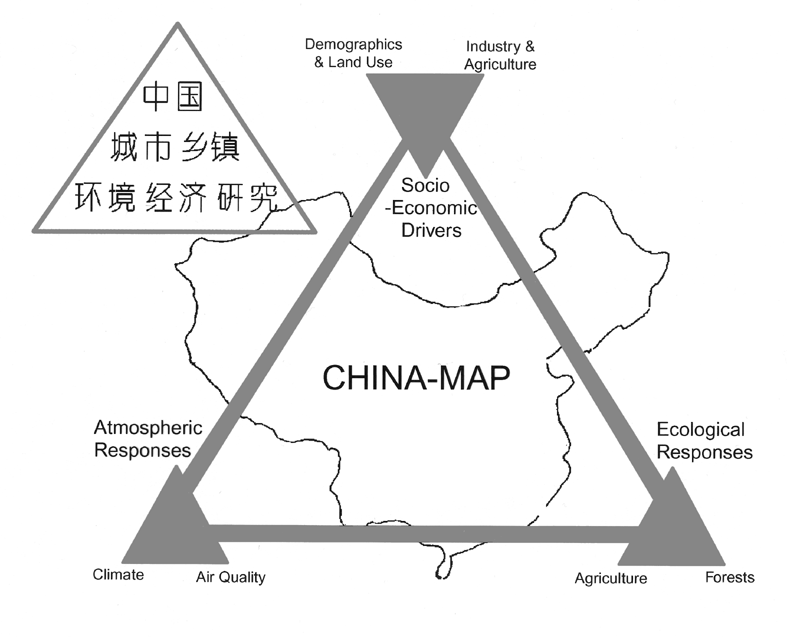Personal tools
News from ICTP 92 - Commentary

China, the world's most populous nation, is also one of the world's most rapidly growing nations. Air pollution, an unwanted by-product of that growth, may pose a threat to China's efforts to promote development in the future. An ICTP staff member explains why.
Hazy Future
Recent studies conducted under the auspices of CHINA-MAP, an international research programme sponsored by U.S. and Chinese organisations, contend that environmental factors may play a critical role in China's efforts to maintain its blistering pace of economic progress in the future. Project researchers conclude that regional pollution, a by-product of China's rapid development, may significantly curb the nation's crop yields. That, in turn, may endanger the sustainability of the nation's economic and social growth.

The unwanted consequences of pollution on agriculture output may
be felt in three ways.
First, volatile organic compounds, carbon monoxide and nitrogen
oxides caused by the burning of fossil fuels in power plants or
automobile emissions may create high ozone levels that prove damaging
to vegetation. Indeed persistently high ozone levels in any single
growing season could significantly depress crop yields.
Second, fine particles discharged into the atmosphere either by
direct emissions during fossil fuel combustion or by the oxidation
of such gaseous pollutants as sulphur dioxides, nitrogen oxides
and volatile organic compounds may continue to reside in the atmosphere
for days or even weeks--scattering and absorbing solar radiation
and enhancing the optical thickness and longevity of clouds. This
would reduce solar radiation at the surface and, in turn, decrease
photosynthesis and crop productivity.
Third, reductions in solar radiation due to anthropogenic regional
haze may decrease regional surface temperature. That could create
a less hospitable growing environment resulting in lower crop
yields.
Such troubling impacts could prove to be more acute in China than
in other countries. Why? Because of China's heavy reliance on
fossil fuels (especially coal), its rapidly expanding industrial
sector and its growing use of automobiles.The CHINA-MAP research
team has recently completed a series of pilot studies on the potential
effects of pollution on crops. The studies draw on meteorological,
chemical and crop models as well as in situ analytical
observations.
Early findings suggest that regional haze in China may be depressing
optimal crop yields of wheat and rice, which account for 70 percent
of the total Chinese crop production, by 5 to 30 percent. Such
impacts are likely to accelerate as pollution emissions increase
as a by-product of rapid economic growth. In addition, the findings
indicate that a rise in anthropogenic aerosols are causing regional
temperature to decrease in several agricultural-rich areas of
east China.
For China to successfully meet its rapidly increasing food demands
in the years ahead, it must better understand the relationship
between its development-related pollution emissions and its agricultural
output.
Although the results of the CHINA-MAP research programme are preliminary,
it's nevertheless clear that China faces a formidable challenge
in fostering plans for rapid development that do not undermine
the long-term health of its agricultural sector, which has made
historic progress over the past half century.
Filippo Giorgi
Head, ICTP Weather and Climate Group
For more technical evaluations of the CHINA-MAP's research
findings, see W.L. Chameides, et al., "Is Ozone Pollution
Affecting Crop Yields in China?" Geophysical Research
Letters 26 (1 April 1999), pp. 867-870, and W.L. Chameides,
et al., "Case Study of the Effects of Atmospheric
Aerosols and Regional Haze on Agriculture: An Opportunity to Enhance
Crop Yields in China through Emission Controls?" Proceedings
of the National Academy of Sciences 96 (23 November 1999),
pp. 13626-13633. Filippo Giorgi co-authored both studies.